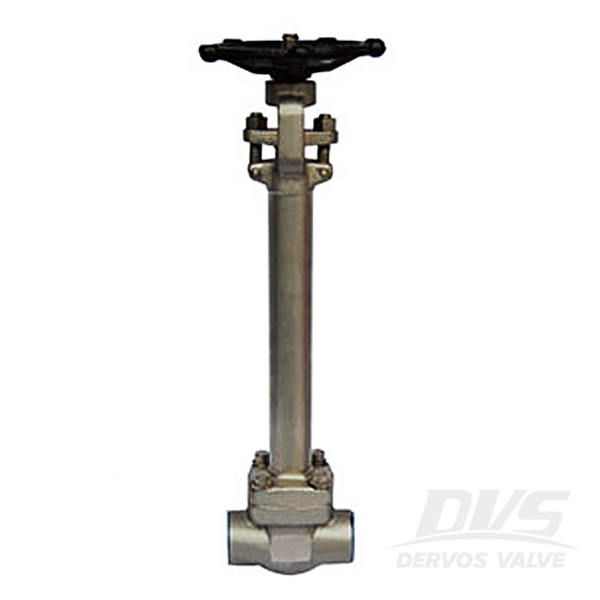Payment:
30% T/T When Order, 70% T/T Before ShipmentProduct Origin:
ChinaColor:
CustomizationShipping Port:
Shanghai ChinaLead Time:
35~60 days Ex Works After Order ConfirmationMaterial:
Stainless Steel Gate Valve, Forged Steel Gate ValveMethod of Operation:
Manual Gate Valve, Handwheel Gate ValveMade of stainless steel, the cryogenic gate valve has extended bonnet, reduced bore, non-rising handwheel, socket weld connection, complying with API 602.
Quick Detail
|
Type |
Gate Valve |
|
Size |
1'' |
|
Design Pressure |
ANSI 1500 |
|
Construction |
Extended Stem, Bolted Bonnet, Solid Wedge |
|
ConnectionType |
Socket Weld (SW) |
|
OperationType |
Handwheel Operation |
|
Body Material |
A182 F316L |
|
TrimMaterial |
SS316L |
|
Design Code |
ASME B16.34 |
|
Face to Face |
ASME B16.10 |
|
End Connection |
ASME B16.11 |
|
Medium |
Water, Oil and Gas |
|
Origin |
China |
Available Modifications for Dervos Valves
-Design Pressure
-Nominal Diameter
-Body Material & Trim Material
-Material & Type for Packing and Gasket
-Valve Operation Type
-Modifications of End Connection
-Available Extended Stem or Bonnet
-Available By-Pass Valve
-Customized Coatings & Packaging

Related Knowledge
Why do we use extended stem for cryogenic valves?
The cryogenic valves are mainly used in low temperature liquid media, like liquefied natural gas and petroleum products.
The reasons why we use extended stem for cryogenic valves are as below:
1.To maintain the temperature of stem packing in a proper level, since the very low temperature will influnce the sealing function of stem pakcing.
2.To prevent the heat outside from entering the valve and cause energy loss to the application
3.The long stem structure facilitates the quick replacement of the valve's main part through the valve cover.
4.To prevent the parts (like handwheel) over stem from freezing
If you are interested in our products and want to know more details,please leave a message here,we will reply you as soon as we can.